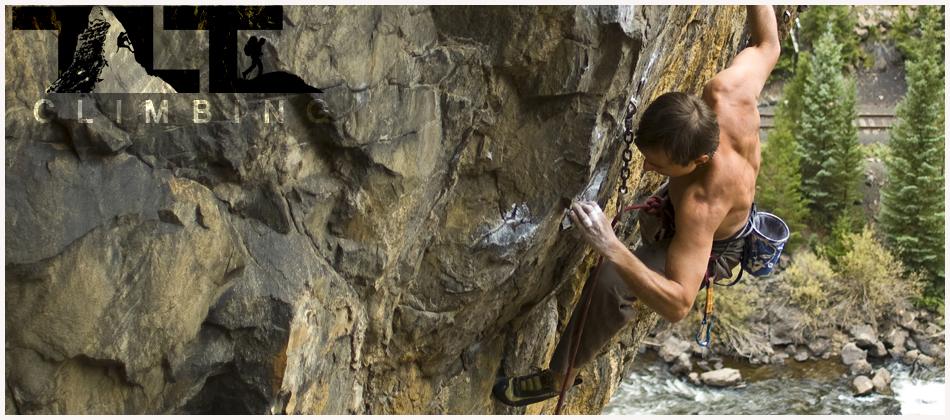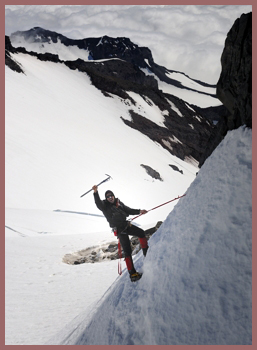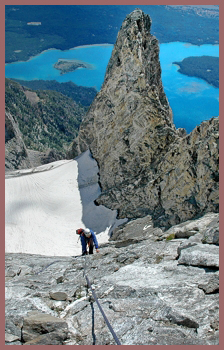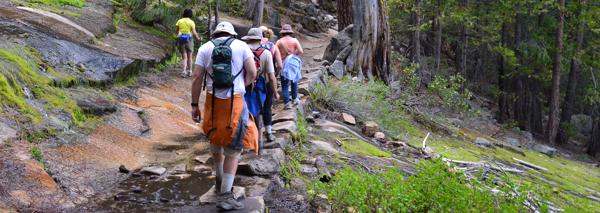
 Climbing is an activity where an individual under their own power ascends a steep object. Some engage in indoor climbing on artificial climbing walls, whereas outdoor climbing is usually limited to rock or ice.
To get a basic understanding on the above subject, we need to look at the rating system. I will use the Yosemite Decimal System, because it is the one I am most familiar with. It consists of five classes indicating the technical difficulty of the hardest section or what climbers call, "The crux of the climb"
Climbing is an activity where an individual under their own power ascends a steep object. Some engage in indoor climbing on artificial climbing walls, whereas outdoor climbing is usually limited to rock or ice.
To get a basic understanding on the above subject, we need to look at the rating system. I will use the Yosemite Decimal System, because it is the one I am most familiar with. It consists of five classes indicating the technical difficulty of the hardest section or what climbers call, "The crux of the climb"  Below is a description of the five classes:
Below is a description of the five classes: As stated above, hiking and backpacking would be considered Class 1 activity with a possibility of a little Class 2 thrown in here and there. As far as climbing is concerned, I would break it down into two categories. The first category I would call "General Climbing," and the second category I would call "Rock Climbing"
General climbing would involve class 3 and class 4 ratings. Rock Climbing, on the other hand, I would classify as Class 5 climbing.
As stated above, hiking and backpacking would be considered Class 1 activity with a possibility of a little Class 2 thrown in here and there. As far as climbing is concerned, I would break it down into two categories. The first category I would call "General Climbing," and the second category I would call "Rock Climbing"
General climbing would involve class 3 and class 4 ratings. Rock Climbing, on the other hand, I would classify as Class 5 climbing. There is also a class that was not mentioned above, and that is aid climbing. That would belong to the advanced climbing category, and it is broken down into terms such as A1, A2, etc. depending on the security of the anchor placement.
Rock Climbers (from what I have experienced) most often like to engage in activities that involve a short approach to their climbing objective. They especially like being able to drive their car right up and get started with a minimal amount of hiking to do. This makes it so they can spend the maximum amount of time on the rock rather than having to spend lots of time driving, hiking, or packing into their location. This method also provides for a quick escape if weather turns bad, or if someone gets injured.
Yosemite would be the classic drive and climb type of National Park. But by far and a way, most Rock Climbers spend most of their time working on local bouldering problems near their homes or on indoor sport climbing walls. These activities are certainly a great way to hone ones skills for more advanced climbs in the future.
Ice Climbing when it comes to ratings, is difficult to define due to the fact that snow depth, thickness of the ice, and temperature affect the conditions of the route. These factors plus the nature of the ice and its protection possibilities determine its difficulty.
There is also the commitment level to consider when it comes to either ice climbing or rock climbing. This has to due with the length of the approach and descent, length of the climb itself, objective hazards, and the nature of the climb. The aforementioned factors weigh in heavy when it comes to planning a climb.
Lastly and most importantly, climbing is an inherently a dangerous activity and care must be taken at all times in order to avoid injuries. So always get expert training and climb with experienced partners.
Dave French
Email Sign Up

| Join the Adventure! Sign up here for Timberline Trails Monthly Newsletter |

Join us on Instagram

©2006-2024 TimberlineTrails. All Rights Reserved.
....